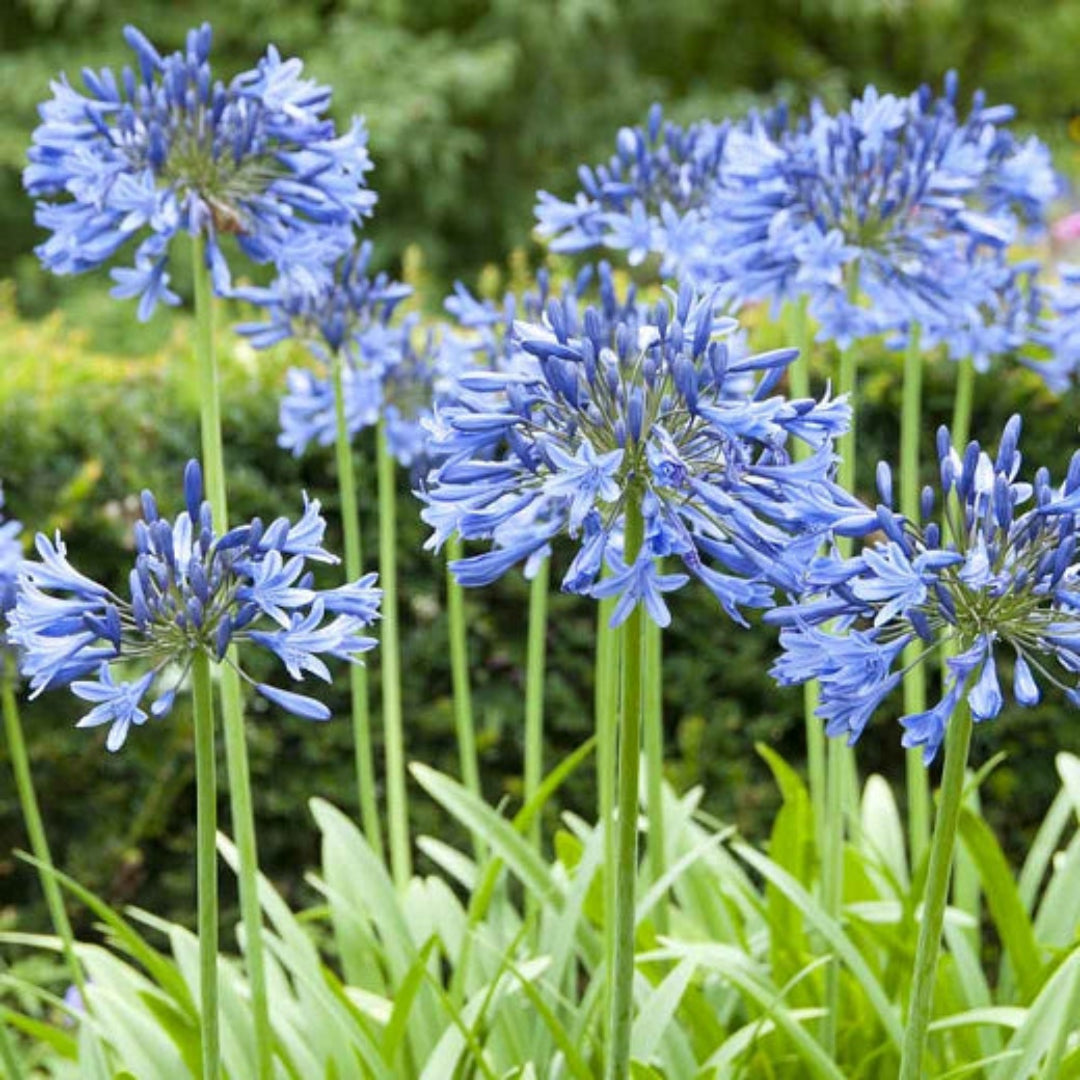Agapanthus Buddy Plants: Perfect Pairings for Your Yard
Agapanthus Buddy Plants: Perfect Pairings for Your Yard
Blog Article
Understanding the Art of Agapanthus Treatment: Crucial Steps for Healthy Growth and Lively Blossoms
In the realm of horticulture, the growing of agapanthus stands as a fulfilling undertaking for those who seek to support these classy blooming plants. From selecting the right variety to mastering trimming methods, the trip towards growing prospering agapanthus plants is multifaceted and holds the crucial to unlocking the complete possibility of these agricultural treasures.

Selecting the Right Agapanthus Variety

When selecting the appropriate Agapanthus range for your garden, take into consideration elements such as environment suitability, blossom color, and development practice. In addition, think about the climate in your area to make certain the Agapanthus range you pick can flourish in your details conditions. Recognizing the growth behavior of different Agapanthus ranges is essential for correct placement within your yard.
Ideal Growing Problems
Thinking about the optimum environmental demands is important for effective Agapanthus farming. Agapanthus flourishes in well-draining dirt with a slightly acidic to neutral pH level. When planting, choose a place that obtains full sunshine to partial color. In hotter climates, supplying some mid-day shade can prevent scorching of the leaves. Agapanthus plants are sensitive to cool temperature levels and must be protected from frost during winter season.
To guarantee healthy and balanced development and vivid blooms, plant Agapanthus bulbs at a depth of regarding 2-4 inches and area them 8-12 inches apart. Including natural issue, such as garden compost, to the dirt can improve drainage and fertility, promoting robust root development. Mulching around the base of the plants assists maintain wetness and subdues weed development. Normal watering is critical, especially during the growing period, to maintain the soil continually wet yet not saturated.
Watering and Feeding Tips
Preserving appropriate moisture degrees and supplying important nutrients are vital aspects in the care routine for Agapanthus plants. When it comes to watering Agapanthus, it is crucial to strike a balance. These plants choose continually damp dirt however are at risk to root rot if overwatered.
Feeding Agapanthus is crucial for advertising healthy and balanced development and respected blossoms. Use a balanced fertilizer, such as a 10-10-10 formula, in the very early springtime as new growth emerges. By complying with these watering and feeding tips, you can ensure your Agapanthus plants prosper and generate vibrant, lasting flowers.
Trimming Strategies for Agapanthus
Pruning Agapanthus plants at the proper times and with try this out correct strategies is essential for preserving their wellness and advertising optimum development and flowering. The optimal time to prune Agapanthus is in late wintertime or very early springtime prior to brand-new development arises. Beginning by getting rid of any kind of yellowing or dead leaves near the base of the plant. Cut them as close to the ground as possible without damaging the emerging shoots.
Deadheading spent blossoms can likewise redirect the plant's power right into generating even more blossoms instead than setting seeds. If you want to gather seeds for proliferation, leave some flowers to dry and fully grown on the plant.
Keep in mind to use tidy, sharp tools to make specific cuts and decrease the risk of presenting conditions. Agapanthus. Routine pruning will assist keep your Agapanthus looking cool and healthy and balanced while ensuring a plentiful display screen of lovely flowers
Handling Typical Bugs and Conditions
After ensuring proper pruning strategies for Agapanthus, it is necessary to resolve common parasites and illness that can impact the health and wellness and vigor of these plants. Agapanthus plants are normally sturdy yet can still succumb certain problems. One usual bug that influences Agapanthus is the Agapanthus gall midge. This tiny, orange fly lays its eggs in the vegetation, causing distorted development and blossom buds that fail to open. To battle this insect, prune and ruin any hop over to here kind of affected plant parts and consider using insecticidal soap.
An additional common problem is fungal fallen leave place, which offers as dark sores on the fallen leaves. To stop fungal diseases, ensure good air blood circulation around the plants, stay clear of overhanging watering, and remove any kind of infected fallen leaves immediately. Additionally, Agapanthus plants can struggle with origin rot if they are grown in poorly draining pipes dirt. To stop this, plant Agapanthus in well-draining soil and prevent overwatering. By being vigilant and taking prompt action versus parasites and conditions, you can visit the website help your Agapanthus plants flourish and create lively blossoms.

Conclusion
In conclusion, mastering the art of agapanthus treatment entails choosing the best variety, providing ideal growing problems, correct watering and feeding, appropriate pruning techniques, and resolving common bugs and diseases. By following these vital actions, you can guarantee healthy development and vivid blossoms for your agapanthus plants. Keep in mind to frequently check and preserve your plants to promote their overall well-being and durability.
To ensure healthy growth and vibrant blooms, plant Agapanthus bulbs at a depth of concerning 2-4 inches and room them 8-12 inches apart. By adhering to these watering and fertilizing pointers, you can guarantee your Agapanthus plants flourish and create lively, long-lasting blossoms.
One usual parasite that impacts Agapanthus is the Agapanthus gall midget. In addition, Agapanthus plants can endure from root rot if they are planted in poorly draining dirt. By following these necessary steps, you can make certain healthy and balanced development and vibrant flowers for your agapanthus plants.
Report this page